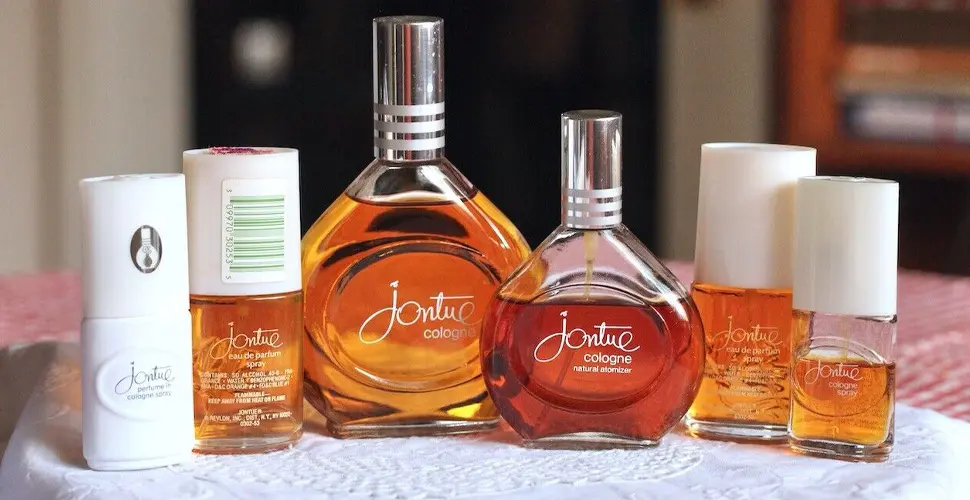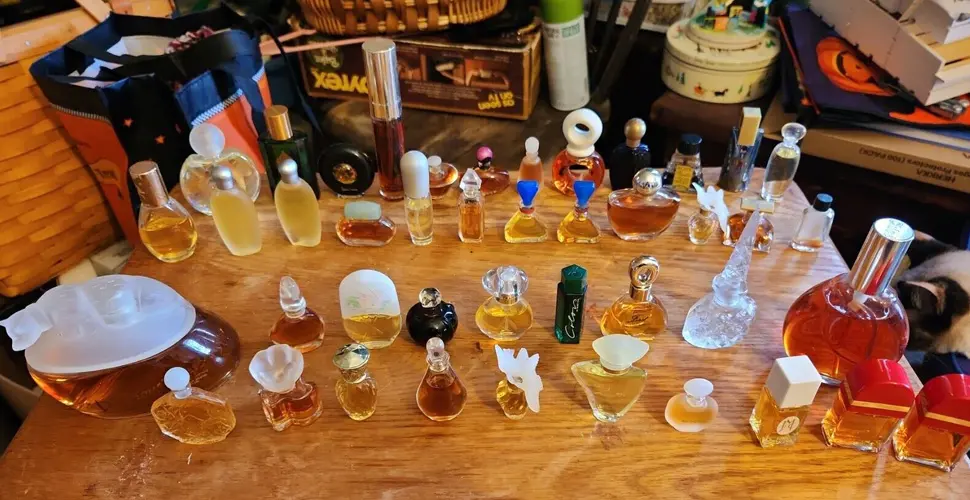The Evolution of Fragrance Notes From Natural to Synthetic
Deana Stallings
- 04 Jan 2023

The Evolution of Fragrance Notes: From Natural to Synthetic
Introduction
Welcome to a world of flavorful fragrance notes for an immersive journey through time!
“Perfume is the magic spell of a woman” - Rachel Allen
Today, let’s explore the journey of fragrance notes and find out how they have changed over time, transforming from natural ingredients to modern synthesized ones.
What is the origin of fragrance notes?
Fragrance notes are basically the components that help compose a perfume. To create the perfect scent, a combination of top, middle and base notes is needed to bring a harmonious blend of aromas and balsams. Initially, natural ingredients like flowers and plants were the main source for creating perfume but gradually, synthetic materials started replacing these raw materials.
It seems, gone are the days when lily of the valley and elderflower made for the ultimate fine fragrances; now rose and lavender oils have to compete with synthetic fragrances from a lab!
In the 1700s, it was all about exuding refinement and poise with natural ingredients like floral extracts and herbs. Marie Antoinette and Queen Victoria were only a few among the few, who loved to adorn themselves with exquisite scents composed by their royal court perfumery. With nature as the primary source of ingredients, the fierce competition among scent-makers saw the invention of recipes that brought out incredible new scents.
However, this would soon change as the development of organic chemistry saw an influx of innovative methods to synthesize perfumes and as a result, new fragrances could be created with increased precision and control. Synthetic ingredients became the norm, which could be produced for a fraction of the cost of natural ingredients.
So, the evolution of fragrance notes saw a move from traditional, nature-induced perfumes to cheaper and more reliable synthetic fragrances.
Ultimately, from coconut extracts to lavender oils to aromas from the laboratory – our modern perfume brands now have more options than ever to create bespoke perfumes that represent us.
Join us as we take a deeper dive into the fascinating voyage of fragrance notes and journey to a time before and after synthetic perfumes!
Evolution of Fragrance Notes
Do you love scent and wearing perfumes? Then you have probably heard about Fragrance Notes. They are the key to understanding perfumes and are the building blocks which make up any scent.
Fragrance Notes consist of different ingredients arranged into a hierarchy, like a pyramid, with different layers. Each ingredient inside a fragrance blend forms its own note.
The base notes (sometimes referred to as the ‘foundation notes’) are the heaviest and slowest to evaporate. They provide the main body of the scent. Think of them as the feet that keep a scent moving and grounded. These are usually warm and woody aromatics that provide stability and balance.
Middle or heart notes, come next and these are the most prominent in a scent. These are usually floral or fruity notes that give a certain character to a perfume and are the first to be noticed. They emerge after the top notes and usually last the longest.
Finally, the top notes come right at the start. They are the first scent a person smells and the lightest and fastest to evaporate. These notes give a perfume itsintroduction and are the most vital in maintaining a scent’s freshness.
All three of these layers are essential for perfumes, as they will combine and mix to create an overarching personality for a scent. They all must work in harmony for the scent to be truly complex and unique.
Have you heard enough about Fragrance Notes and their role in perfumes? Well, don’t worry if you haven’t, for you can always rely on your talented nose and trust your instinct! Play around with scents to find the one that speaks to you and you’ll never regret it.
Remember, it’s all about the notes!
Natural Fragrance Notes
When it comes to fragrances, natural ingredients have a long time as an important component in many popular brands. Natural fragrance notes present an opportunity to mix and match to create distinct and recognizable looks, aromas, and even therapeutic benefits with their use.
From flowers and herbs to spices, natural elements can each contribute a unique benefit to the overall scent of a perfume or cologne. They provide a distinction that is not available for synthetic materials, offering the wearer a signature scent that can’t be replicated.
Flowers offer a range of colors, shapes, and aromas that have been used in perfumes and colognes alike since ancient times. Roses, Lavenders, and Jasmines are just a few prime examples of petals that have been used to create exquisite smells.
Herbs are also popular natural ingredients used in fragrances, as they provide a variety of earthy tones that compliment and add to the main notes of the perfume. Sage, Thyme, and Basil are all common examples, but there are others that can provide just as much of an impact to the overall fragrance.
Spices have also been used to create unique scents throughout the years, utilizing their unique pepper and pepperminty tones. This can create a refreshing and exciting punch that can bring forth an array of emotions to the user.
The advantages to using natural notes in fragrances are many, not just for their unique aromas, but for their benefits as well. Many fragrances containing natural ingredients are said to induce relaxation, energy, and thoughts of peace. They can also provide therapeutic benefits, not to mention the joy of mixing and matching to find your special signature scent.
The only disadvantage to using natural materials is the cost. Natural ingredients tend to be more expensive than their synthetic counterparts, so the cost may be a deterrent for some when it comes to purchasing perfumes containing natural notes.
Ultimately, however, the benefits achieved with natural notes in perfumes and colognes outweigh the cost, making them a good option to consider when looking for your signature scent. So don’t be afraid to indulge in the wonders of personalizing your own smell – you won’t regret it!
Synthetic Fragrance Notes
A Look at the Synthetic Ingredients in Perfumes
When it comes to a good scent, few things provide the same satisfaction as high-quality perfume. But what exactly are the mysterious ingredients behind these wonderful smells? Well, while many perfumes use natural essences such as flowers, herbs and spices, there are also synthetic ingredients used to create unique and flavorful fragrances.
The process for creating synthetic fragrance notes is actually quite complicated. First, perfumers need to extract essences from the desired source by heating, steaming, or pressing them. Then, utilizing numerous methods and processes, these essences are combined to create the desired fragrance note. Once the aroma has been successfully created, there is one more step to go through: molding. Lab scientists use a special type of process to mix and adjust the properties of the fragrance until it is precisely the way the perfumer desires. Finally, the fragrance is put into bottles, ready for purchase!
The use of synthetic fragrances has created much controversy in the industry. On the one hand, synthetic ingredients are relatively easy to find, meaning they are a cost-effective way to make perfume. Moreover, since different chemicals can be combined to create unique scents, many perfumes have a unique and complex aroma compared to those made with only natural ingredients. On the other hand, synthetic ingredients can be more hazardous to the environment. Furthermore, some argue that while synthetics can create more complex aromas, they are not as “real” as natural fragrances, leading to a dull and artificial smell.
The decision to use synthetic fragrances or not is up to the perfumer. Synthetic fragrances can create beautiful and unique aromas, however in some cases it may be worth considering if the cost and environmental impact is worth it.
So there you have it, an overview of the introduction of synthetic ingredients in perfumes. We hope this article has shed some light on the process of creating synthetic fragrant notes and the advantages and disadvantages in using them. Now go out and strut your stuff, smelling great thanks to your favorite synthetic fragrances!
The Shift to Synthetic Fragrance Notes
As the fragrance industry evolves, more and more consumers and perfumers are turning towards synthetic fragrances to express themselves and transport their senses to new and exciting worlds.
Why the shift? Factors such as cost, availability and performance are causing a trend towards using more synthetic fragrance notes.
Firstly, synthetic fragrances are significantly less expensive than their non-synthetic counterparts. Consequently, companies are able to create a range of perfumes to appeal to all budgets and help extend their customer base. In addition, their availability is extended by the nature of synthetic fragrances, with their base liquids and concentrations varying. This allows for the production of perfumes with unique and varied scents, something customers may not have been able to access before.
Secondly, the performance of synthetic fragrances is unparalleled in comparison to traditional, non-synthetic fragrance notes. Synthetic fragrances are able to provide stability and world-wide availability of these scents.
What does this shift mean for the industry and consumers as a whole? Fragrance companies have an opportunity to tap into the demand for new and interesting scents, and customers can explore a much wider range of fragrances. On the downside, traditional non-synthetic fragrances are constantly being pushed to the bottom of the priority list.
It’s clear that the trend towards using synthetic fragrances is here to stay - and it looks set to remain in the spotlight for some time yet. The industry has an opportunity to create a diversified range of fragrances to cater to all tastes, while customers now have an almost unrivalled range of scents to explore. So, why don’t you give synthetic fragrances a whirl and experience the scent of the future? Go on, you know you want to you deserve it!
The Future of Fragrance Notes
Fragrances are one of the oldest products known to mankind. Over thousands of years they have been used to mark territory, attract mates and simply make us feel good. The fragrance industry has changed dramatically over the years and today, there are some amazing new trends and innovations that are set to revolutionize the way we think and use perfume.
In recent years, there has been a shift towards natural and sustainable ingredients that are better for the environment, for our skin and for our overall wellbeing. Natural and organic ingredients are becoming increasingly popular, as people are trying to move away from synthetic fragrances that can sometimes be harsh and drying on the skin. This trend is growing and more and more companies are releasing natural and organic products that are more effective and non-toxic.
Another exciting innovation in the fragrance industry is the use of new and innovative notes. For years the same classic notes have been used to make traditional perfumes, but today there is a trend towards experimenting with new and interesting scents. Synthetic ingredients, essential oils and natural aromatics are all being used to create unique and interesting fragrances that are far more complex and interesting than the traditional ones.
A third trend in the industry is the use of technology to create new types of fragrances. Smart fragrances and olfactory experiences are now beginning to dominate the market. Thanks to advancements in technology, companies are now able to create fragrances that are completely unique and personalized to the individual using them.
The potential for new and innovative fragrances is immense. Natural and organic ingredients mean we can create scents that are not only more environmentally friendly, but also better for the skin. Synthetic fragrances are being used to create intriguing and unique scents, whilst technology is being used to allow us to customize our fragrances like never before.
The potential impact of these trends and innovations on the fragrance industry is sure to be far reaching. The demand for natural and organic ingredients is only going to increase, as people become more aware of their health and the environment. Similarly, the use of technology to create customized fragrances is sure to see even more interesting and complex creations, as companies look to set themselves apart from the competition.
So if you’re looking for something truly unique and exciting in the world of fragrances, then look no further. The fragrance industry is changing fast and it’s only going to get even more exciting! Who knows what innovative aromas will be gracing our noses in the near future?
Conclusion
Thank you for joining us on this journey through the evolution of fragrance notes, from the beginning of natural ingredients to the present day use of synthetic ingredients. It is hard to imagine our fragrances without the unique and creative fragrances provided by synthesized components. We hope that this article has provoked some interesting thoughts and questions about the continued use of both natural and synthetic ingredients in modern fragrances.
Furthermore, we encourage readers to continue researching the evolution of fragrances, experiment with natural and synthetic products, and find their own unique scent! Remember that the many fragrance notes today were developed deliberately and thoughtfully, a testament to the creativity that inspires ongoing perfume innovation.
We thank you for your time in learning about the evolution of fragrances, and hope you found this article both informative and enjoyable. Now that you understand the complexity and importance of this craft, maybe you will find yourself captivated in the endless scents of today’s world.
So until next time, go out and make your own mark with a custom scent of your own design!


